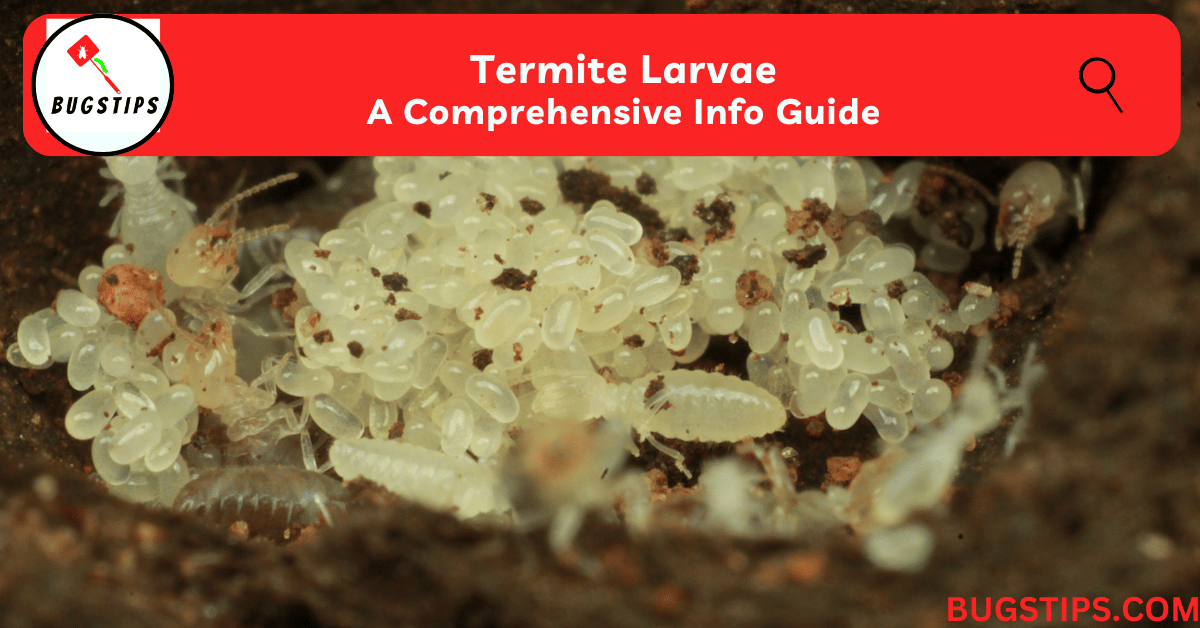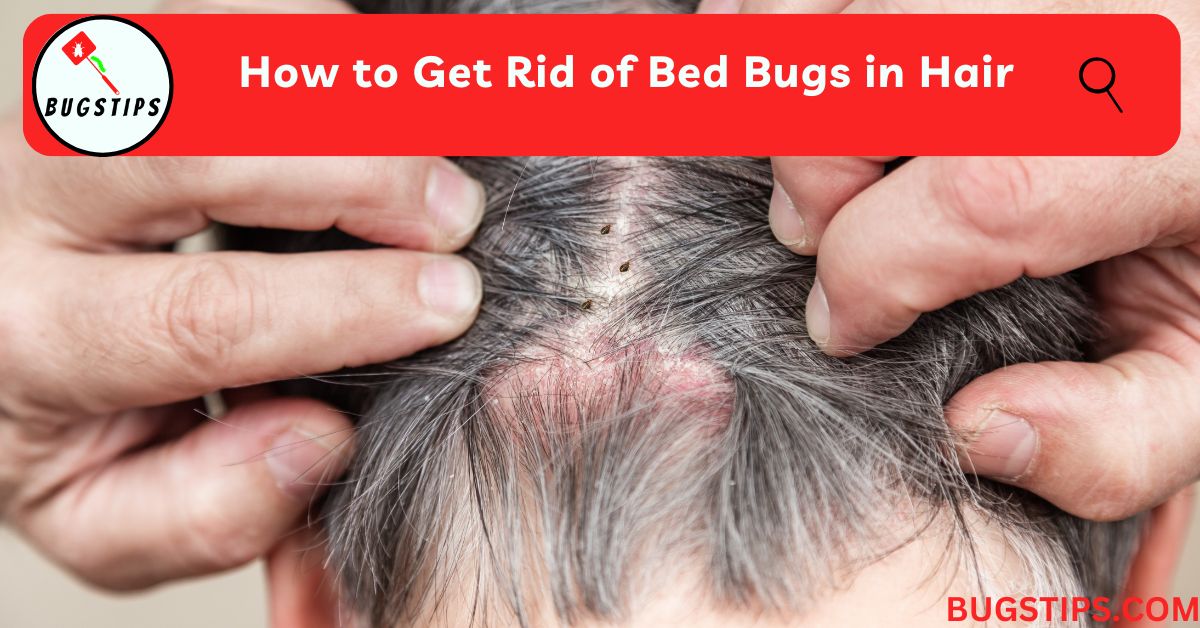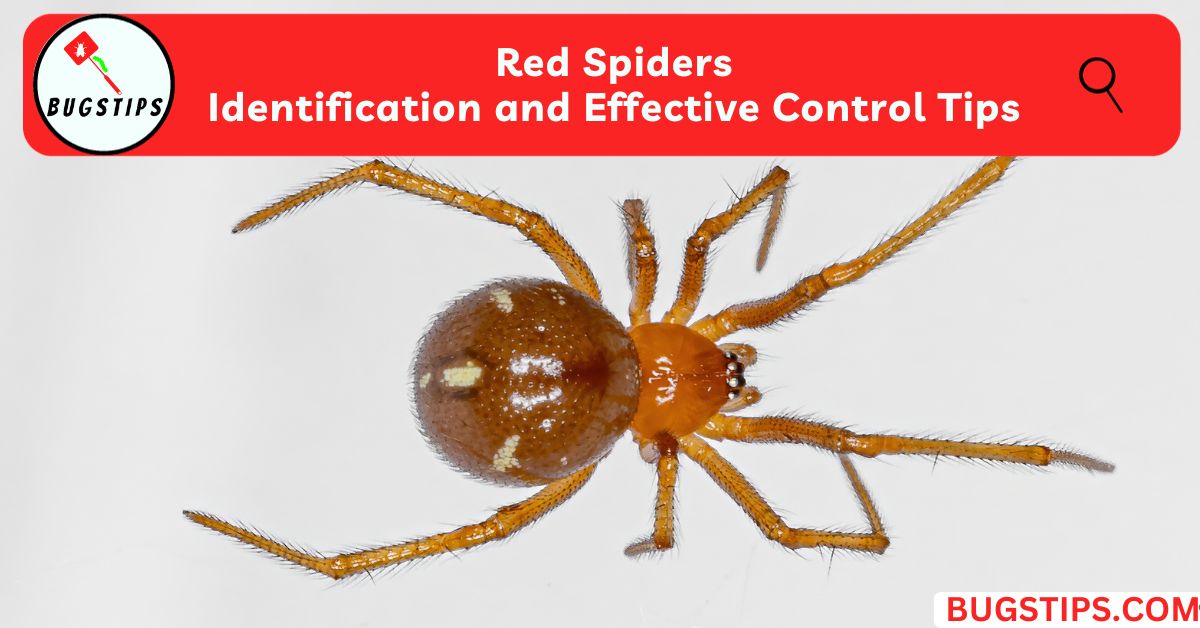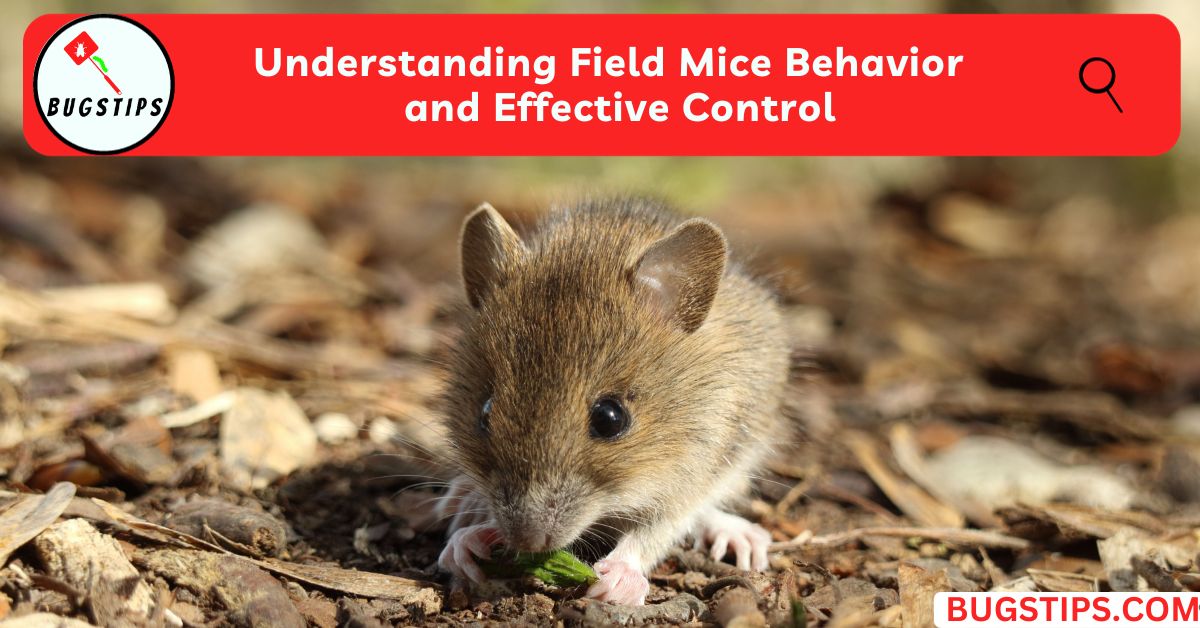This post may contain affiliate links which means as an Amazon Associate, this site may earn a small commission on qualified purchases made through links at no extra cost to you. Learn more on Affiliate Disclosure
Termites are one of the most destructive pests that can infest your home or property, and their larvae play a crucial role in causing damage.
In this article, we will explore everything you need to know about termite larvae, including their life cycle, diet, and how they compare to maggots.
We will also discuss the damage they can cause to your property and the potential harm they pose to humans.
Additionally, we will provide tips on identifying and treating an infestation, as well as preventing termite larvae from taking hold in the first place.
So, let’s dive in and learn more about these pesky pests!
Related Article – 8 Bugs That Look Like Flying Termites | Exposed
What Are Termite Larvae?
Termites are social insects that live in large colonies and have a hierarchical structure. Termite larvae are the juvenile form of termites and hatch from eggs laid by the queen termite.
They are small, white, and worm-like in appearance, and they are an essential part of the termite colony’s life cycle.
During their larval stage, they feed on wood and other cellulose-based materials, breaking down the fibers with the help of symbiotic protozoa in their digestive system.
This process allows them to extract the nutrients they need to grow and develop into adult termites.
Related Article – Flying Ants in Arizona: 10 Amazing Facts
The Life Cycle of Termite Larvae
Egg Stage
The life cycle of termite larvae begins with the egg stage. The termite queen, the reproductive powerhouse of the colony, lays numerous eggs.
These eggs are tiny and often translucent. They require a controlled environment with specific temperature and humidity conditions to hatch successfully.
Larval Stage
Once the eggs hatch, the termite larvae emerge. At this stage, they are small, pale, and wingless. Termite larvae resemble miniature versions of adult termites, but they have softer bodies.
During the larval stage, these tiny creatures go through a period of rapid growth and development
Pupal Stage
After the larval stage, termite larvae enter the pupal stage. During this phase, they undergo significant changes and transformations. The pupal stage is characterized by the termite larvae developing into their adult forms.
It is during this stage that they develop wings, becoming reproductive adults or specialized caste members depending on their designated roles within the termite colony.
Adult Stage
Finally, the termite larvae complete their journey to adulthood. The transformed larvae emerge as fully grown adult termites, ready to assume their responsibilities within the termite colony.
Adult termites take on various roles, including workers, soldiers, and reproductive individuals, working together in a highly organized social structure.
Related Article – 10 Long Skinny Black Bugs in House
How Long Do Termite Larvae Live?
The lifespan of termite larvae can vary depending on several factors. However, a termite colony typically goes through several stages of development, and the egg stage is the first stage in the life cycle.
The egg stage typically lasts 25-30 days, after which the hatchlings emerge as termite larvae or immatures.
Termite larvae then go through a series of molts, and their growth and development depend on several factors, including the availability of food and environmental conditions. Once they reach maturity, they become workers, soldiers, or reproductive termites.
The lifespan of workers and soldiers can range from one to two years, while queen termites can survive for over a decade under optimal climate conditions.
However, the lifespan of termite larvae is generally shorter than that of adult termites, as they are still in the process of developing and growing.
It's important to note that the longevity of a termite colony is dependent on several factors, including access to food and shelter, environmental conditions, and the effectiveness of termite control measures.
You May Also Like – Baby Bed Bugs: 10 Facts You Need to See
Why Are There Termite Larvae in My House?
Discovering termite larvae in your house can be concerning, but there are several reasons why they may have found their way inside.
Here are a few possible explanations.
- Infestation Source:
- Your house may be experiencing a termite infestation. Termites are highly efficient at finding and exploiting vulnerabilities in structures. They can enter your home through tiny cracks in the foundation, gaps in windows or doors, or even through the soil surrounding your property.
- Moisture and Wood:
- Termites are attracted to moisture and wood, making your house an ideal environment for them. Leaky pipes, damp basements, or areas with poor ventilation can create favorable conditions that attract termites. Once inside, they seek out wooden structures, such as beams, furniture, or even wooden flooring, as food sources.
- Nearby Termite Nests:
- If there are termite nests in close proximity to your property, the chances of termite larvae finding their way into your house increase. Termites can establish nests in trees, soil, or even neighboring structures. From there, they can venture into your home to search for food and expand their colony.
- Transportation:
- Sometimes, termite larvae can be unknowingly transported into your house. This can happen through infested wooden items, such as furniture, firewood, or even construction materials. If these items are brought into your home, the termite larvae present within them can hatch and start their journey.
The presence of termite larvae in your house signifies the potential for a larger termite problem. It's crucial to address this issue promptly to prevent further damage to your property.
Related Article – Bugs in Mailbox: 10 EASY Ways to Keep Them Out
Where Can You Find Termite Larvae?
Termite larvae can be found in specific areas of your home or property where termites establish their colonies.
Here are some common places to look for termite larvae.
- Wooden Structures:
- Termites, including their larvae, are attracted to wood as a food source. Inspect wooden structures such as beams, pillars, furniture, or wooden flooring for signs of termite larvae.
- Subterranean Areas:
- Termites, including their larvae, often build their nests in soil or underground. Check areas around your property with direct contact with the soil, such as crawl spaces, basements, or foundation walls, for any signs of termite activity.
- Moisture-Affected Areas:
- Termites thrive in moist environments. Pay close attention to areas with high moisture levels, such as bathrooms, kitchens, laundry rooms, or areas with plumbing leaks. These areas can provide attractive conditions for termite larvae.
- Dark and Hidden Spaces:
- Termites prefer dark and concealed spaces to carry out their activities. Inspect areas such as attics, wall voids, or behind stored items in your basement or garage for any indications of termite larvae.
- Exterior Landscaping:
- Termites can also infest wooden elements in your outdoor spaces. Check wooden fences, decks, or landscaping features for any signs of termite activity, including the presence of termite larvae.
Related Article – 14 Small Tiny Brown Bugs In House
How Do You Identify Termite Larvae?
Identifying termite larvae can be helpful in determining the presence of a termite infestation. While termite larvae resemble miniature versions of adult termites, there are some key characteristics that can aid in their identification.
Here’s what to look for:
- Size and Color:
- Termite larvae are small, typically ranging from 1/8 to 1/4 inch in length. They have soft bodies and are often pale or translucent in color.
- Shape and Features:
- Termite larvae have elongated bodies with distinct body segments. They lack wings, unlike reproductive adult termites. Their heads are usually darker in color, and they have six legs.
- Grouping:
- Termite larvae are often found in groups or clusters, close to the termite colony. They may be seen crawling together in a protected area or near a food source, such as wood or damp areas.
- Presence of Workers:
- Termite workers, the caste responsible for foraging and feeding the colony, are commonly found alongside termite larvae. The presence of workers near the larvae can indicate their identity.
You May Also Like – 8 Bugs That Look Like Lint and Bite
Termite Larvae vs Maggots
Maggots and termite larvae may look similar at first glance, but they have some important differences.
People sometimes confuse them because they both have worm-like bodies and are found in certain environments.
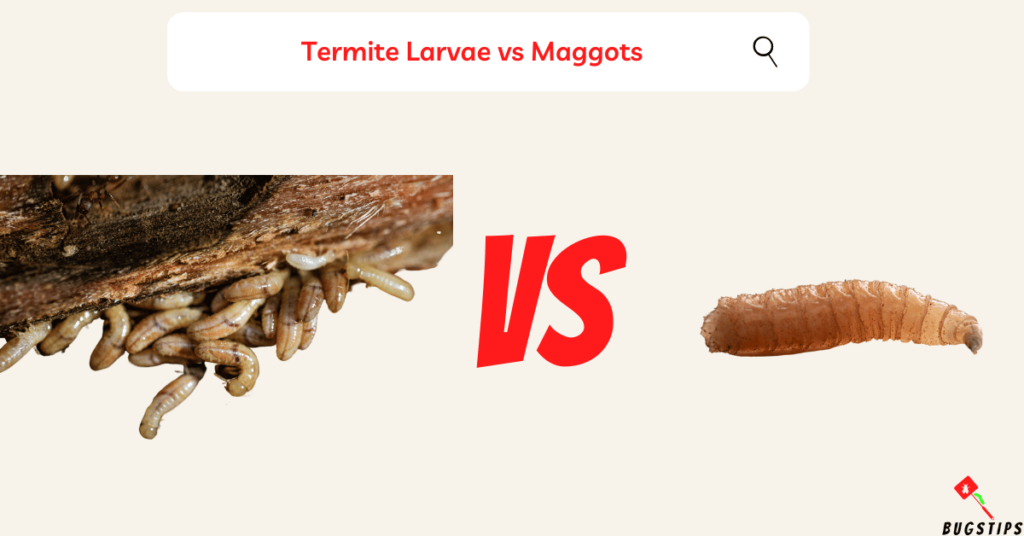
So here we’ll explore the characteristics that set termite larvae and maggots apart.
| Topic | Maggots | Termite Larvae |
|---|---|---|
| Appearance | White, legless | Darker color, three pairs of legs |
| Habitat | Decomposing organic material | Wood, soil, cellulose-based materials |
| Significance | Indicate unsanitary conditions | Indicate potential termite infestation |
| Behavior | Aid in decomposition | Assist in colony growth and maintenance |
| Diet | Decomposing organic matter | Cellulose-rich materials (wood, plant fibers) |
Appearance
- Maggots:
- Maggots are usually white in color and lack legs. They have a soft, cylindrical body shape and are typically found in decaying organic matter
- Termite Larvae:
- Termite larvae, on the other hand, have a darker coloration and possess three pairs of legs. They have a segmented body with a distinct head and are commonly found in wood, soil, and other cellulose-based materials.
Where You Find Them
- Maggots:
- Maggots are commonly found in decomposing organic material such as rotting food, animal carcasses, or waste matter. They thrive in environments rich in organic waste.
- Termite Larvae:
- Termite larvae are typically found deep within termite colonies. They inhabit wooden structures, soil, and other cellulose-containing materials where their termite colonies are established.
What They Mean
- Maggots:
- The presence of maggots is often an indication of unsanitary conditions or the decay of organic matter. They play a role in the natural process of decomposition.
- Termite Larvae:
- Termite larvae signify the existence of a termite colony nearby. Their presence suggests a potential termite infestation that requires attention to prevent further damage to structures.
What They Do
- Maggots:
- Maggots primarily feed on decaying organic matter, breaking it down and aiding in the process of decomposition. They serve as nature’s recyclers.
- Termite Larvae:
- Termite larvae are responsible for the growth and development of the termite colony. They contribute to the expansion of the colony and assist in the maintenance and repair of termite tunnels and structures.
What They Eat
- Maggots:
- Maggots feed on a wide range of decomposing organic matter, including food waste, animal remains, and rotting vegetation.
- Termite Larvae:
- Termite larvae primarily consume cellulose-rich materials, such as wood and plant fibers. They extract nutrients from these sources to support their growth and development.
You May Also Like – 15 Tiny Yellow Bugs
Can Termite Larvae Cause Damage to My Property?
Termite larvae themselves are not capable of causing direct damage to your property. However, as they mature into adult termites, they can become highly destructive. Let’s explore why
Termite larvae rely on cellulose as their primary food source for survival. Since cellulose is a component found in wood, it becomes one of their preferred food choices.
As termite larvae develop into adults, they continue to feed on wood, which can lead to significant damage to your home or building over time.
It's important to note that termites, including their larvae, are responsible for an astonishing $5 billion in property damage annually.
The concerning part is that termite colonies can remain undetected for years before visible damage becomes apparent. Therefore, early detection and proactive treatment are essential to mitigate potential property damage.
Related Article – 12 Tiny Black Bugs on Window Sill | Quick Fixes
Can Termite Larvae Cause Any Harm to Humans?
Termites and termite larvae are not known to carry diseases that are harmful to humans, and instances of termite bites are extremely rare.
While they do not directly cause harm to humans, their presence and the damage they cause to your home can lead to potential issues.
Water Damage
One of the indirect consequences of termite infestation is the potential for water damage. Termites can compromise the structural integrity of your property, leading to leaks and moisture issues.
Excessive moisture can create an environment conducive to mold growth, which may pose health risks to individuals, especially those with respiratory conditions like asthma.
Allergens
Termites produce allergens that can trigger symptoms in some individuals. Breathing problems, skin irritation, and watery eyes may occur, particularly in individuals with pre-existing respiratory conditions.
It’s important to note that these symptoms are caused by the allergens released by termites, not by the termites themselves.
However, it's important to note that termites are not inherently dangerous to humans or pets. Their primary objective is to locate food and water sources to sustain their colonies. While their activities may indirectly lead to potential issues, direct harm caused by termite larvae to humans is highly unlikely.
How to Treat Termite Larvae
If you have a termite infestation in your home, it’s essential to take action to eliminate the problem and prevent further damage.
Here are some effective methods for treating termite larvae.
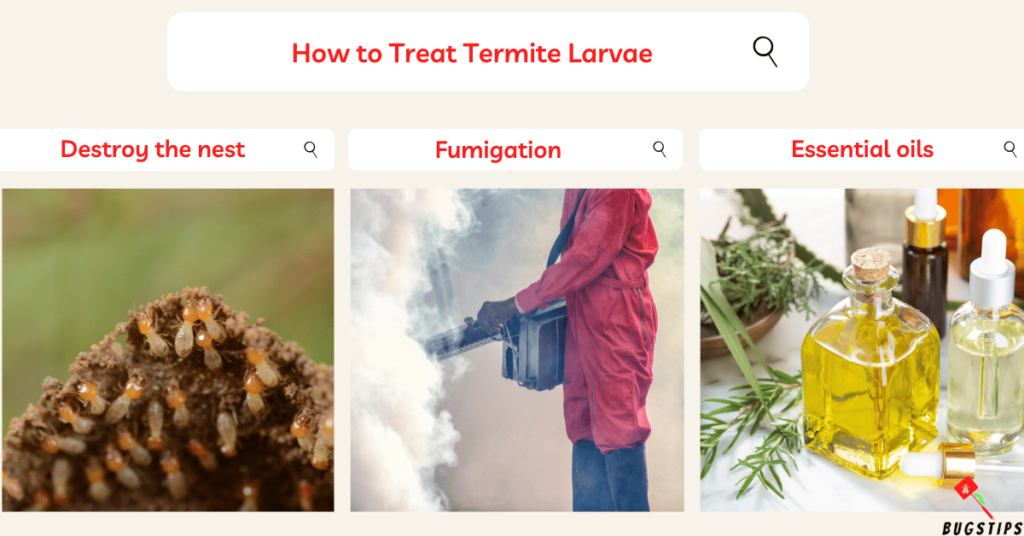
Destroy the Nest
Destroying the nest is one of the most effective ways to treat a termite infestation, as it eliminates the source of the problem. To destroy a termite nest, you can use several methods.
- Baiting:
- Baiting involves placing termite bait stations around the perimeter of your home. These stations contain a slow-acting poison that the termites consume and then bring back to the nest, where it ultimately kills the colony.
- Liquid termiticide:
- Liquid termiticide is a chemical solution that is sprayed around the perimeter of your home. The termites then come into contact with the solution and bring it back to the nest, where it kills the entire colony.
- Physical removal:
- Physical removal involves physically removing the nest from your property. This method is typically used for smaller infestations and can be accomplished by digging up the nest and destroying it.
Related Article – How to Get Rid of Ant Hills
Heat Treatments
Heat treatments are an effective way to treat termite infestations and can be used as an alternative to chemical treatments. This method involves raising the temperature in an affected area to a level that is lethal to termites.
There are two main types of heat treatments.
- Convection heat treatments
- involve using specialized equipment to heat the air in an affected area to a temperature of 120-140 degrees Fahrenheit. The heat penetrates into walls, floors, and other areas where termites may be hiding, effectively killing them.
- Radiant heat treatments
- use infrared heat to target specific areas of an infestation. This method is particularly effective for treating localized infestations, such as in wall voids or attics.
Heat treatments are generally safe and eco-friendly and can be used in conjunction with other methods, such as baiting or physical removal. However, it's important to note that heat treatments can be expensive and may require specialized equipment and expertise.
Fumigation
Fumigation is a termite treatment method that involves using a toxic gas to eliminate a termite infestation. This method is typically used for severe infestations or in cases where other treatment methods have failed.
During a fumigation treatment, the affected area is sealed and covered with a tarp to create an airtight space. A fumigant gas, such as sulfuryl fluoride or methyl bromide, is then introduced into the space.
The gas penetrates into the wood and other areas where termites may be hiding, effectively killing them.
Fumigation is a highly effective method for eliminating termites, but it requires special equipment and expertise to be performed safely.
You must vacate the property during the treatment and follow specific instructions for re-entering the property after the treatment is complete.
It's important to note that fumigation can be expensive and may cause damage to plants and other living organisms in the surrounding area. It's best to consult with a professional pest control company to determine if fumigation is the best option for your specific situation.
Essential Oils
Certain essential oils have been found to be effective in repelling or killing termites. These oils work by disrupting the termites’ digestive systems or nervous systems, ultimately leading to their death.
Here are some of the most effective essential oils for termite control.
- Orange oil:
- Orange oil contains d-limonene, which is toxic to termites. It can be applied directly to infested areas or used in diffusers to repel termites.
- Neem oil:
- Neem oil is a natural pesticide that is effective against a wide range of pests, including termites. It can be applied to infested areas or used in diffusers to repel termites.
- Clove oil:
- Clove oil contains eugenol, which has insecticidal properties. It can be applied directly to infested areas or used in diffusers to repel termites.
Essential oils can be an effective natural alternative to chemical treatments for termite control. However, it's important to note that essential oils may not be as effective as other treatment methods and may require more frequent applications.
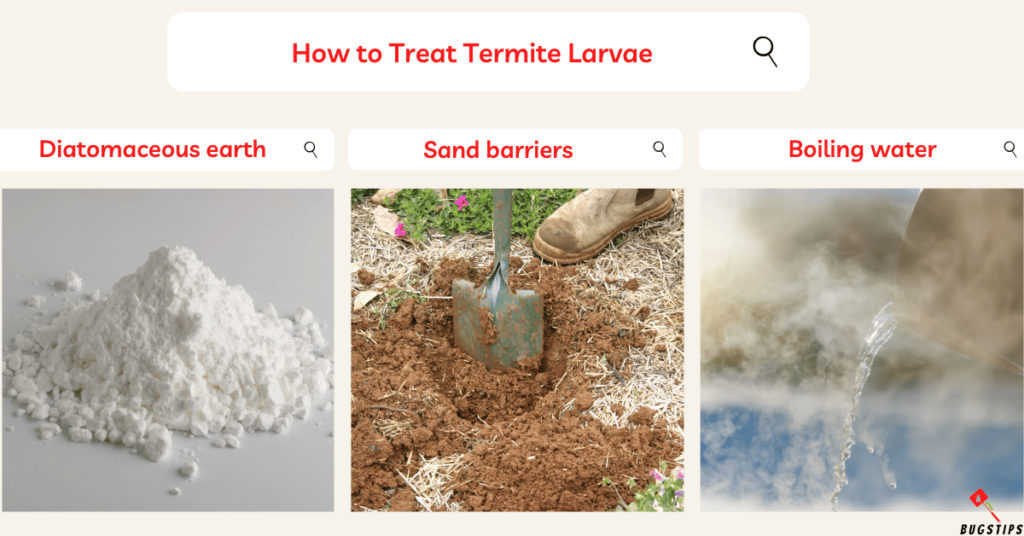
Diatomaceous Earth
Diatomaceous earth is a natural substance that is abrasive to insects, including termites. It is made from the fossilized remains of diatoms, which are single-celled algae with hard shells.
When diatomaceous earth comes into contact with termites, it damages their exoskeletons, ultimately leading to their death. It also absorbs the waxy outer layer of their bodies, causing them to dehydrate and die.
Diatomaceous earth can be applied to infested areas by dusting it directly onto the wood or using it as a barrier around the perimeter of your home. It’s important to use food-grade diatomaceous earth, as other forms may contain harmful chemicals that can pose a health risk to humans and pets.
Sand Barriers
Sand barriers are physical barriers that can be used to prevent termites from entering a building or affecting an area. The sand creates an inhospitable environment for termites, as it is dry and lacks the moisture that termites need to survive.
To create a sand barrier, a trench is dug around the perimeter of the building, and the sand is then filled into the trench. The sand should be at least 18 inches deep and extend at least 2 feet from the foundation wall.
Sand barriers are most effective when used in conjunction with other preventative measures, such as sealing cracks and crevices and removing wood debris from around the building.
It's important to note that sand barriers may not be effective for treating existing infestations and are best used as a preventative measure.
Boiling Water
Boiling water can be an effective method for killing termites in localized areas, such as tree stumps or infested furniture. When boiling water is poured onto an infested area, the heat penetrates the wood and kills the termites inside.
Boiling water is most effective for small infestations and may not be as effective for larger infestations or hard-to-reach areas. It’s important to note that boiling water should be used with caution, as it can cause burns or scalding if not handled properly.
If you're dealing with a termite infestation, it's important to hire a professional pest control company to assess the problem and recommend the best treatment options. They have the expertise and equipment necessary to eliminate the infestation and prevent further damage to your home.
You May Also Like – Little Black Bugs in My Car | Expert Removal Guide
Final Thoughts
Termite larvae present a significant challenge for homeowners due to their destructive behavior. These small and elusive pests can be found within wooden structures and may even infiltrate through cracks in concrete walls. Detecting their presence is crucial, as they leave behind noticeable signs.
It is essential to address termite larvae infestations promptly to prevent further damage to your property. By taking proactive measures and seeking professional assistance, you can effectively eliminate these pests and safeguard your home from their harmful impact.
FAQs
What are termite larvae?
Termite larvae are the early developmental stage of termites within the colony. They are young termites responsible for tasks such as feeding and care.
What do baby termites look like?
Termite larvae are small, white, worm-like creatures. They have no eyes, wings, or legs and are often found in wood, soil, or other organic matter.
What else looks like termite larvae?
Other insects, such as maggots or mealworms, may be mistaken for termite larvae due to their similar appearance.
How big are termite larvae?
Termite larvae are typically small in size, measuring a few millimeters in length. They are much smaller than adult termites.
What do termite larvae eat?
Termite larvae feed on wood, cellulose, and other organic matter. They are important for the growth and development of the colony.
If I found termite larvae, did I find the main colony?
Discovering termite larvae does not necessarily indicate the presence of the main termite colony. Termite larvae are usually found near the nest or feeding sites, but the main colony itself may be located elsewhere.
Are termite larvae capable of reproducing?
No, termite larvae are not capable of reproducing. Only adult termites are capable of reproducing.
Do termite larvae have any natural predators?
Yes, various predators such as ants, birds, and other insects may feed on termite larvae.
Can termite larvae survive outside of the colony?
Termite larvae are dependent on the colony for food and protection, so they cannot survive outside of the colony.
Resources – (for further reading)
North Carolina State University – Termites – Biology and Control Wood-Damaging Pests
University of Hawaii – Termite life cycle
Mississippi State University – Methods of Termite Control
Purdue University – Termite – larva – Extension Entomology

